Dogs on a Boat

When we decided to change our lives and move onto a boat, the majority of the questions revolved around the dogs.
Do they even like the water?
How do you keep them cool?
Do they get seasick?
Can they travel with you to other countries?
And the most frequently asked question… where do they do their “business”?
If you have known us for any length of time, you have probably heard us talk about our pups. In case you haven’t here’s a brief introduction.
Olive, 50 lbs. 6 years old
Olive originally came from a kill shelter in Georgia. We adopted her when she was 12 weeks old and she clearly had a rough beginning. We quickly learned that she has many quirks. She doesn’t always do well when meeting new people or dogs but she’s an an absolute lover if you’re on her good side. She can swim like crazy and seems to never tire. This dog was made for boat life. She loves the water, sun and can balance with grace just about anywhere. In fact, we sometimes joke that she’s part mountain goat. She also loves finding small places (like under our nav station) to hide and feel safe, especially during thunderstorms.
Tully, 80 lbs. 4 years old
We adopted Tully from a rescue in south Florida. Unlike Olive, she was in a foster home and very well socialized when we got her, weighing just 9 lbs. when we brought her home. She’s named Tully Mars after the main character in one of my favorite books. She’s long, lanky and dense. She can’t swim but loves being in the water at the beach. Tully is a bull in a China shop. She’s part Great Dane and it definitely shows because she thinks she’s a lap dog. We knew it would be harder for her to adapt to boat life because of her general clumsiness but after just a few weeks, she settled right in. Unlike Olive who hides in the tiniest, out-of-the-way spot, Tully can typically be found spread out on the floor taking up the entire salon.
I’ve answered the first question about their love of the water in the bios so let’s move on to how we keep the dogs cool. It’s July in Florida and we don’t have A/C on our boat. Keeping cool is a daily battle for us and we pay extra attention to make sure the pups aren’t uncomfortable or overheated.
Fans – We have four fans running in our salon area during the day.
Cooling mats – These gel-filled mats stay cooler than our floor by several degrees. For an added kick, we can throw them in the fridge to give the girls an even cooler spot to lay down. I’m kind of jealous of these.
Water – When the heat just becomes overwhelming, we rise the dogs in water. Since dogs don’t sweat like we do, we drench their skin and fur to basically simulate the sweat cooling effect (physics called heat of vaporization). We also always make sure they have fresh, cool water available to drink.
As far as seasickness goes, the dogs have been on boats since they have been puppies. While these have mostly been day trips on center consoles, they have never been seasick. I (Nina) seem to be the only one in the family who has ever been seasick.
Travel to other countries is one we’re still figuring out but we are very careful to research and follow all of the rules. Every country has different requirements, tests, paperwork, etc. We’re currently working on getting the dogs over to the Bahamas and we’re in the process of following the required steps:
- We submitted the Application to Import Domestic Animal Form, including vaccination records. Using the help of a local named Wellington.
- After approval a Dog Permit was issued, which usually takes about 2 weeks but it took Wellington less than a week. We will then be given a Veterinarian Form (AGR/VS/1A Form) which must be completed by a registered Veterinarian 24 hours prior to travel. We already have a vet appointment for July 29 so fingers crossed the timing works out.
- Finally, we submit the Dog Permit and Completed Veterinarian Form to an Agricultural Officer and Customs Officer at the port of entry.
And finally, the answer everyone wants to know… where they do their “business”. We take them to the beach or sandbar often but that’s not always an option. So, we have also taught them to go on the boat. Olive figured out how to use the trampoline nets on the bow of the boat on her first night aboard. Again, she was made for boat life. Tully, who is a bit less graceful, uses a grass mat we lay out right next to the trampoline. It took a couple weeks and some encouragement (treats) but once they realized they weren’t going to get in trouble for going on the boat, they’ve been pros.
Olive and Tully really are part of our family. We made life-long commitments to them when we adopted them and it’s really important to us that we keep them safe and healthy. They were a huge factor in our planning and transition to life aboard.
We plan to document our experience with the dogs as we move to other countries because it’s not easy. We learned from those who have traveled with dogs before us and hope our experience may help someone else plan their travel. If there’s one thing that rings true from our research, everyone’s experience is different based on the people sitting behind the desk on a given day. Hopefully it won't be a big deal but we’ll report back either way.

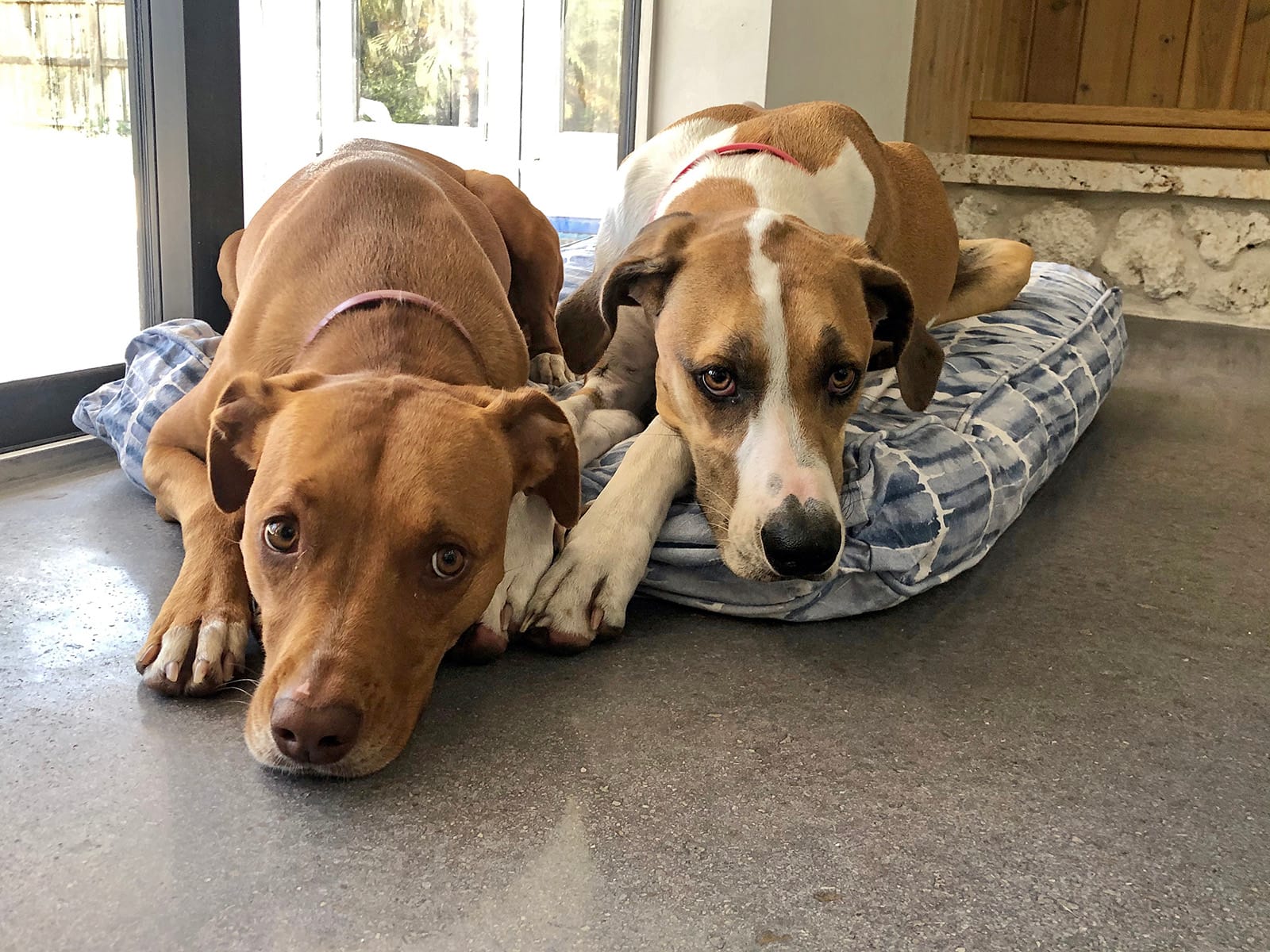
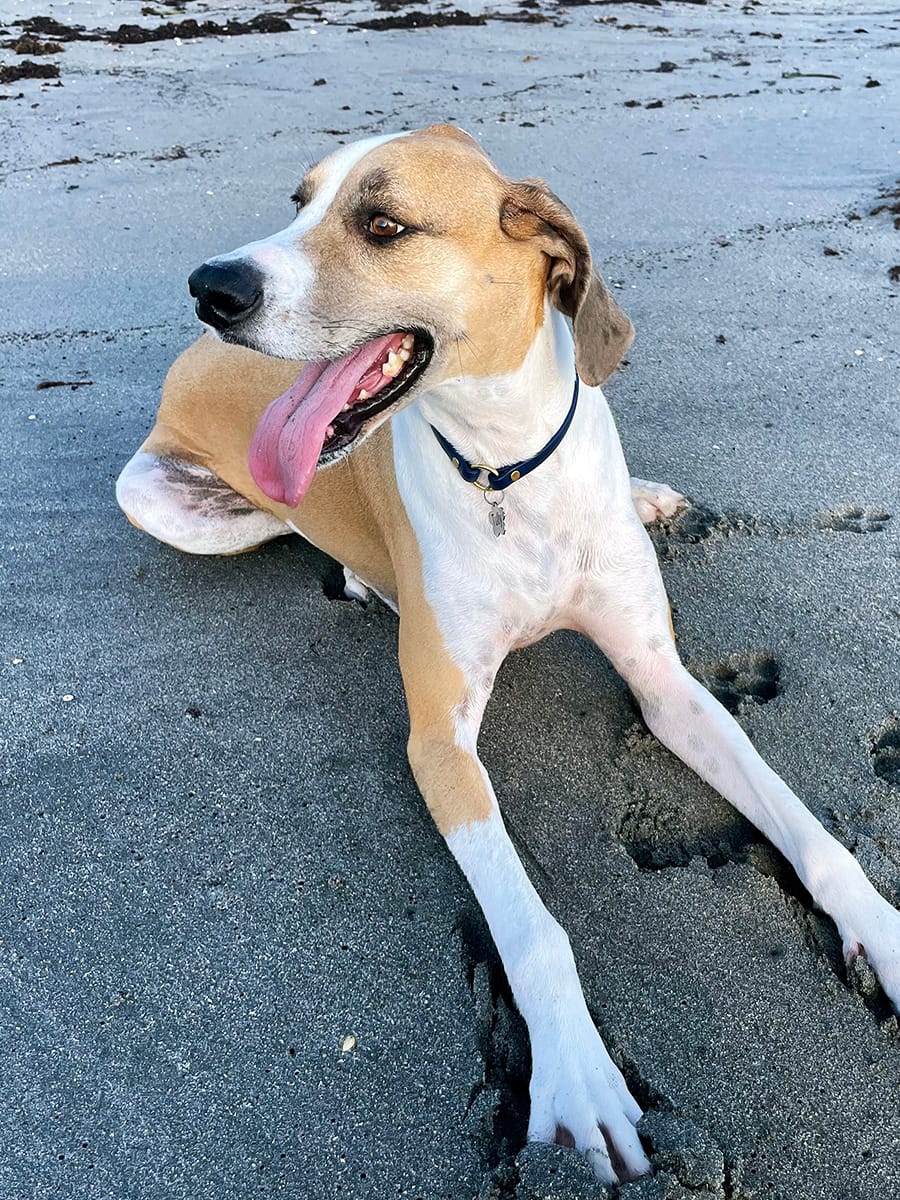
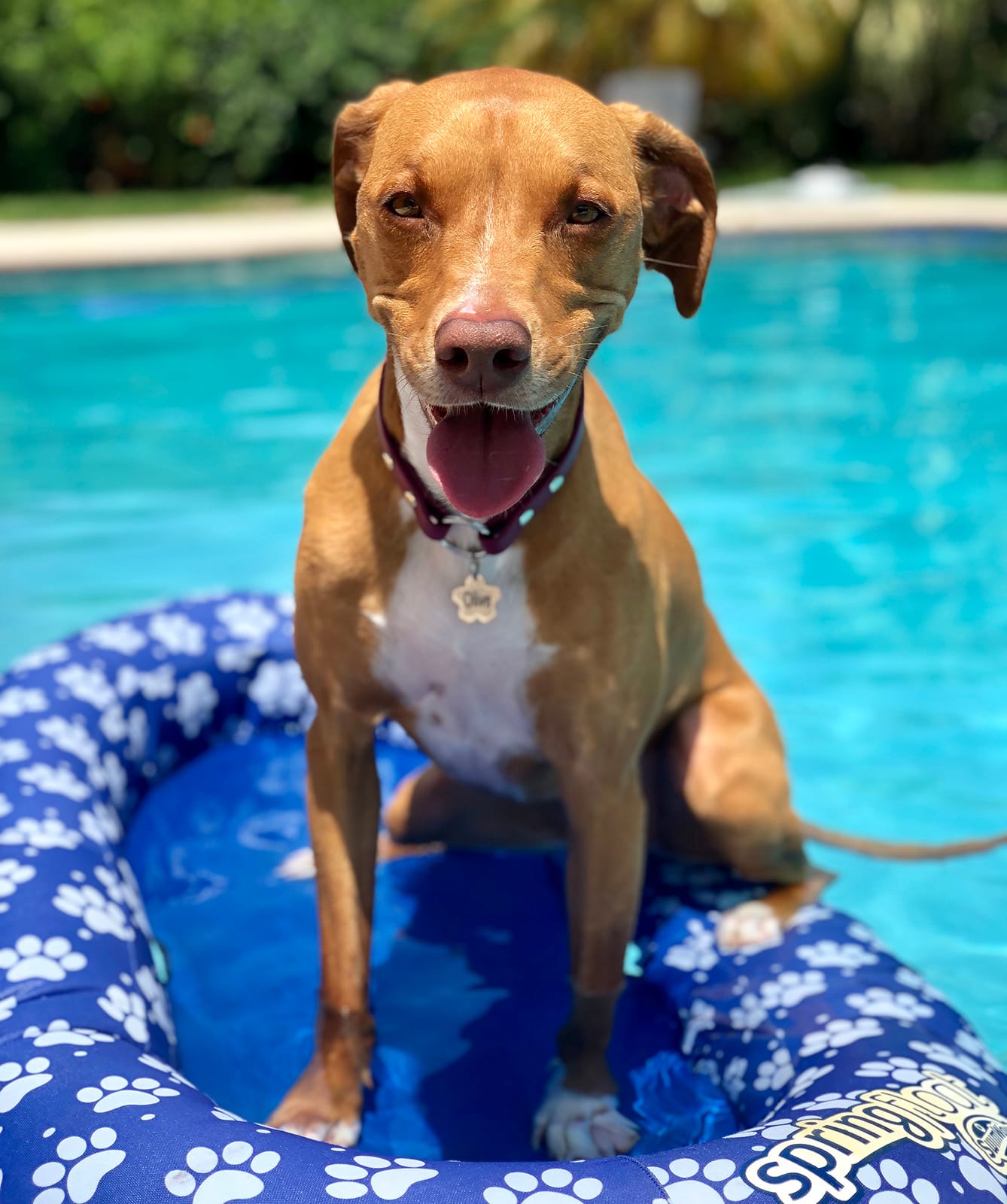
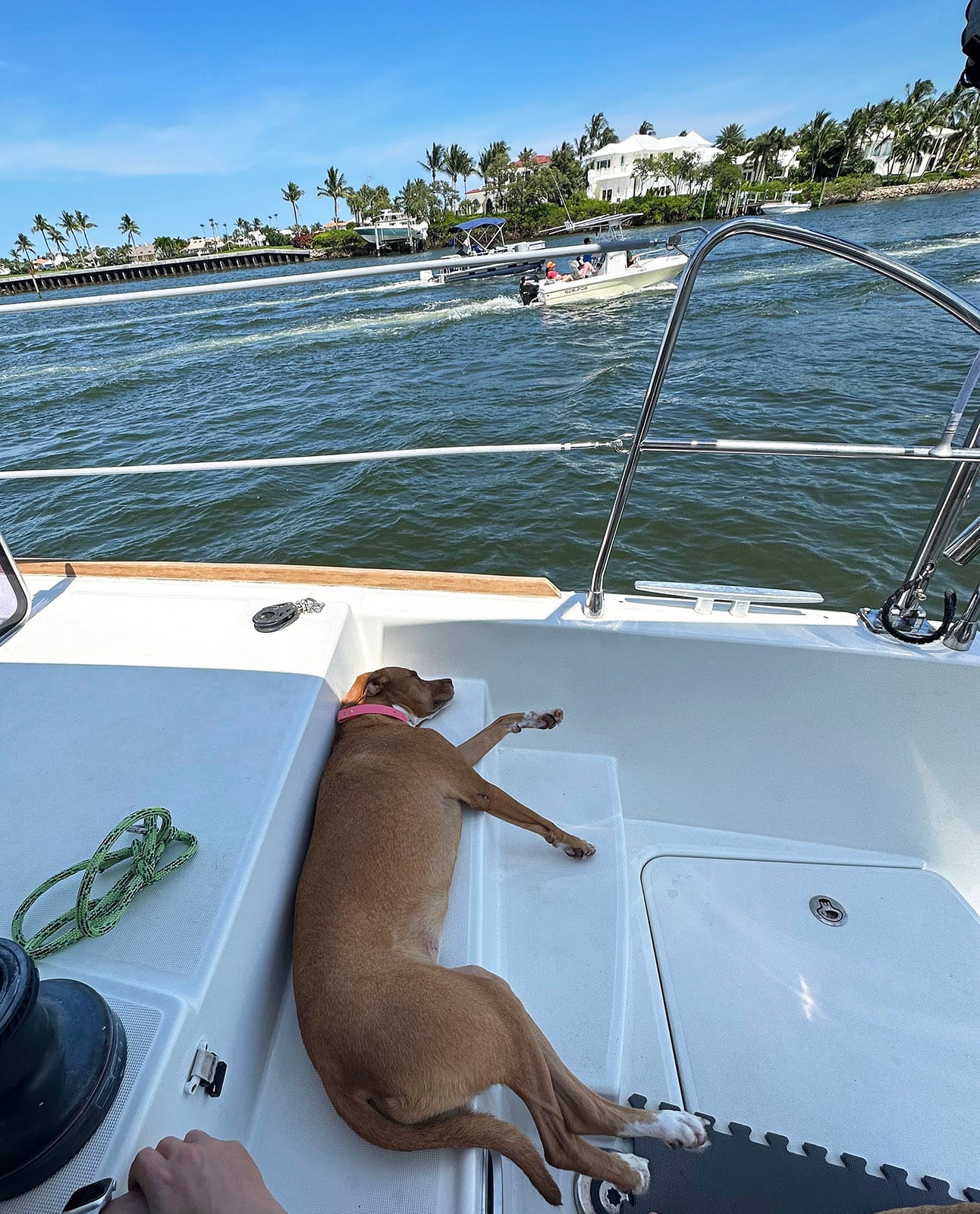
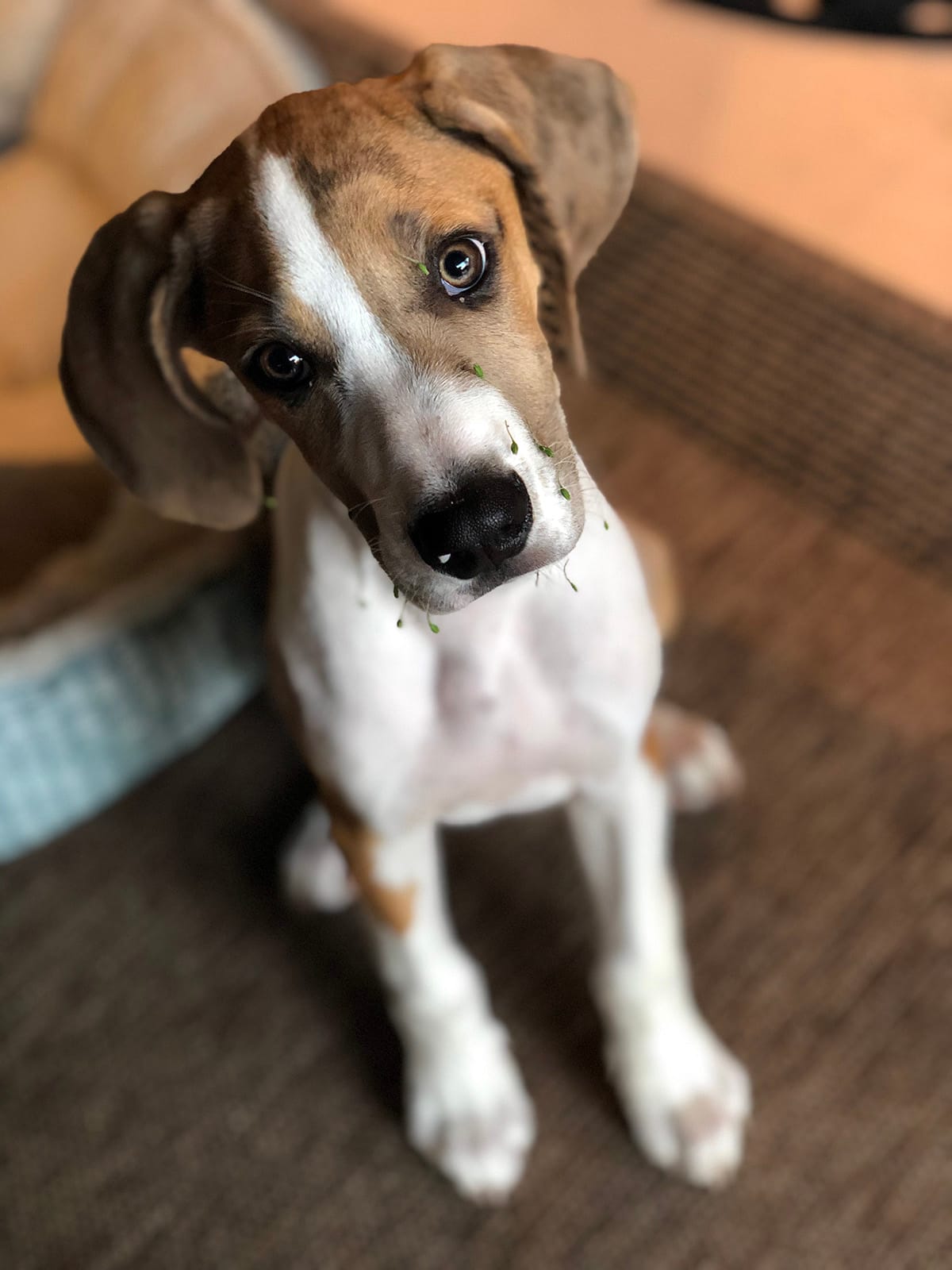
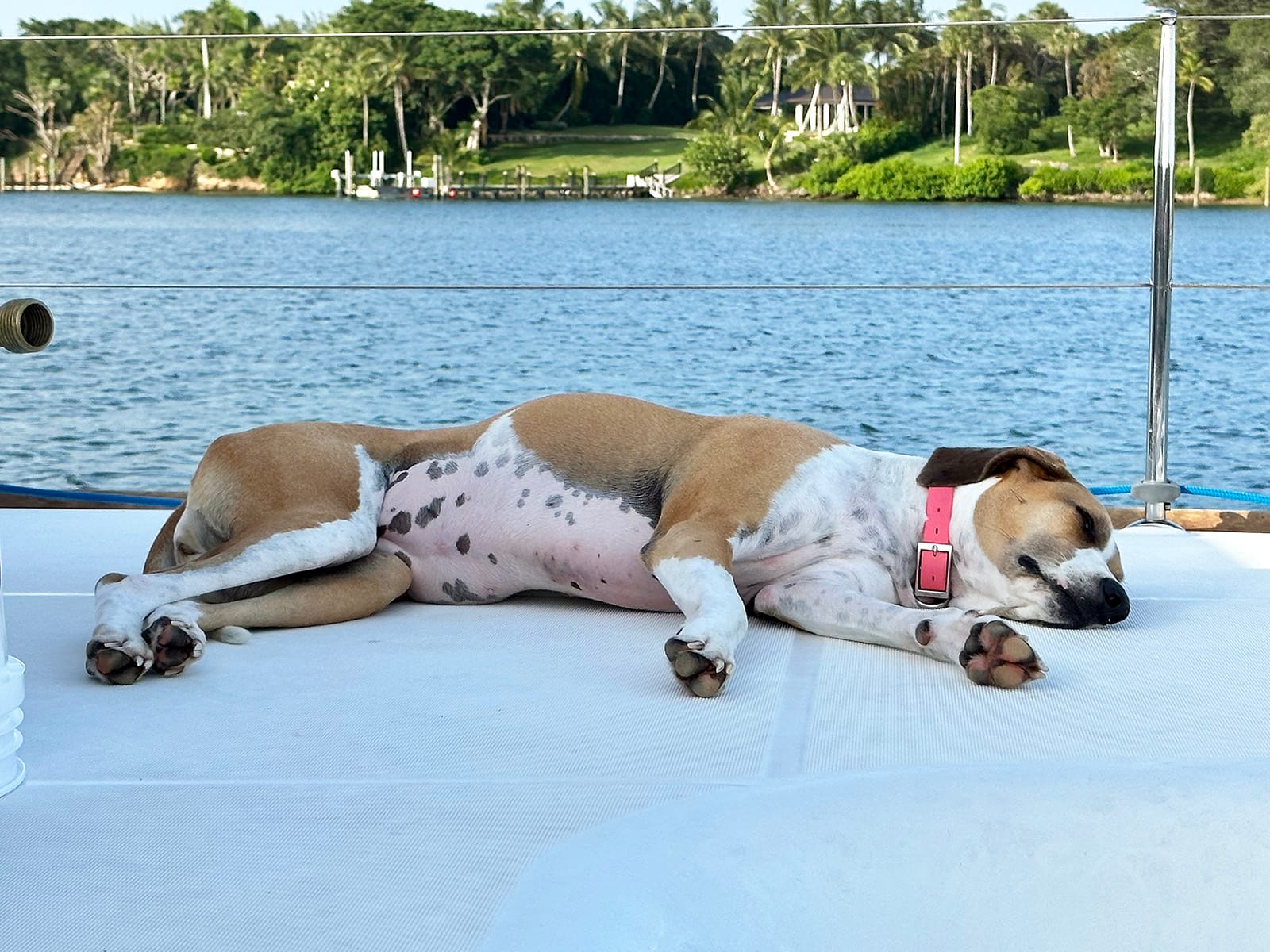
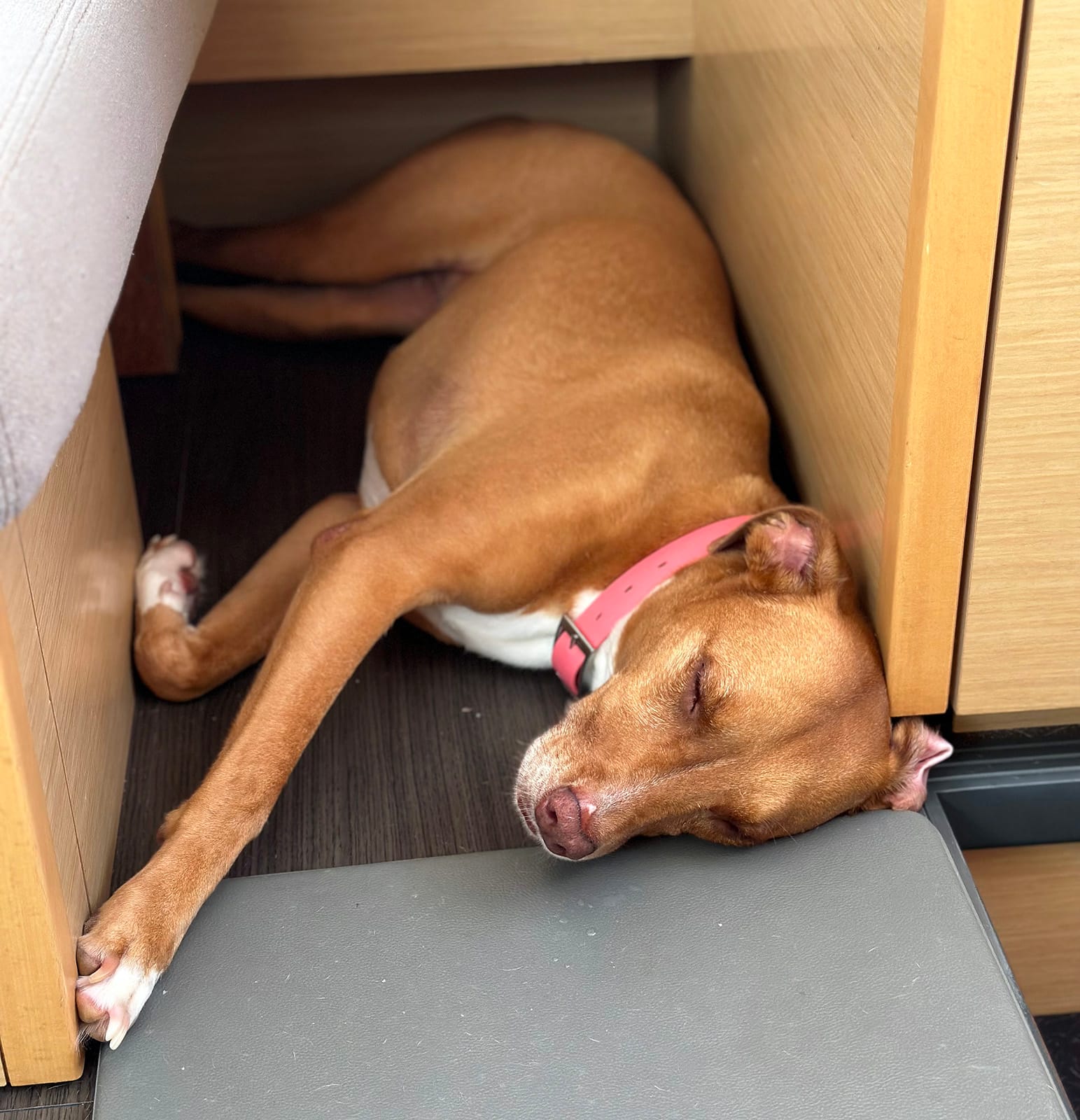







Member discussion